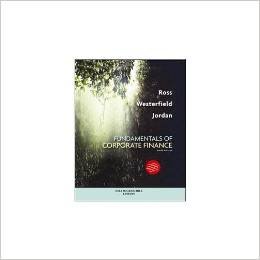
Concept explainers
a)
To find: The euros that Person X can get if he has $100
Introduction:
The price of a country’s currency that in term of the other nation’s currency is the exchange rate. The rate of exchange can be either floating or fixed. The two components of the exchange rates are the foreign currency and the domestic currency.
b)
To find: The worth of a euro.
Introduction:
The price of a country’s currency that in term of the other nation’s currency is the exchange rate. The rate of exchange can be either floating or fixed. The two components of the exchange rates are the foreign currency and the domestic currency.
c)
To determine: The dollars that Person X can get if he has 5 million euros.
Introduction:
The price of a country’s currency that in term of the other nation’s currency is the exchange rate. The rate of exchange can be either floating or fixed. The two components of the exchange rates are the foreign currency and the domestic currency.
d)
To determine: Whether the Country NZ’s dollar worth more or the Country S’s dollar worth more.
Introduction:
The price of a country’s currency that in term of the other nation’s currency is the exchange rate. The rate of exchange can be either floating or fixed. The two components of the exchange rates are the foreign currency and the domestic currency.
e)
To determine: Whether the Country M’s peso worth more or the Country C’s peso worth more.
Introduction:
The price of a country’s currency that in term of the other nation’s currency is the exchange rate. The rate of exchange can be either floating or fixed. The two components of the exchange rates are the foreign currency and the domestic currency.
f)
To find: The Country M’s peso that Person X can obtain for a euro and also determine this rate.
Introduction:
The price of a country’s currency that in term of the other nation’s currency is the exchange rate. The rate of exchange can be either floating or fixed. The two components of the exchange rates are the foreign currency and the domestic currency.
g)
To determine: The valuable and the least valuable currency per unit.
Introduction:
The price of a country’s currency that in term of the other nation’s currency is the exchange rate. The rate of exchange can be either floating or fixed. The two components of the exchange rates are the foreign currency and the domestic currency.
Want to see the full answer?
Check out a sample textbook solution
Chapter 21 Solutions
Fundamentals Of Corporate Finance, Tenth Standard Edition
 Intermediate Financial Management (MindTap Course...FinanceISBN:9781337395083Author:Eugene F. Brigham, Phillip R. DavesPublisher:Cengage Learning
Intermediate Financial Management (MindTap Course...FinanceISBN:9781337395083Author:Eugene F. Brigham, Phillip R. DavesPublisher:Cengage Learning
